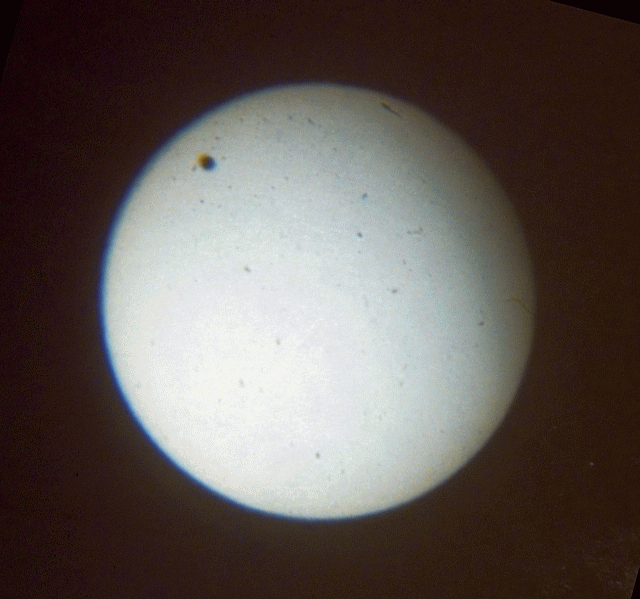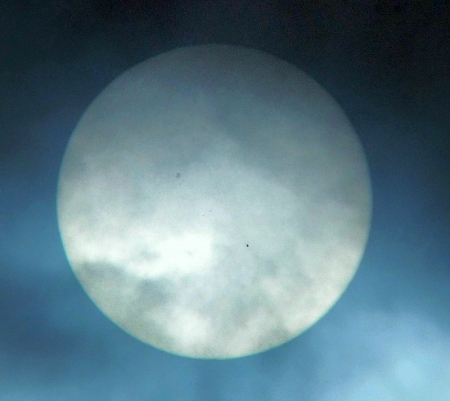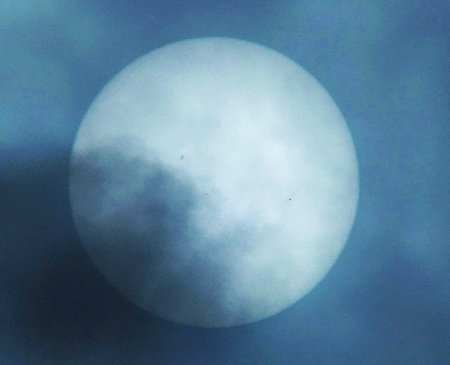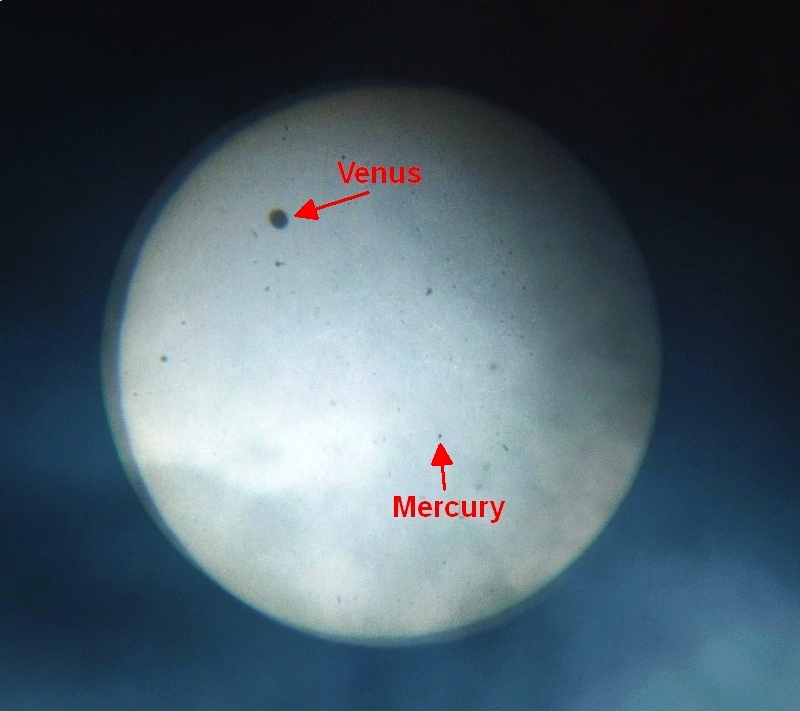Planetary Transits
All photos taken by and © Bruce G. Marcot.
![]()
Transit of Venus, 5 June 2012, taken from
northwest Oregon USA.
This 3-frame animation shows part of the path of Venus across the disk of the sun.
On the day of transit, it rained in the morning, then was intermittently cloudy and overcast afterward, allowing a view of only parts of the transit.
Click on image for larger version.

I used my small 4.5" reflector telescope to capture the images.
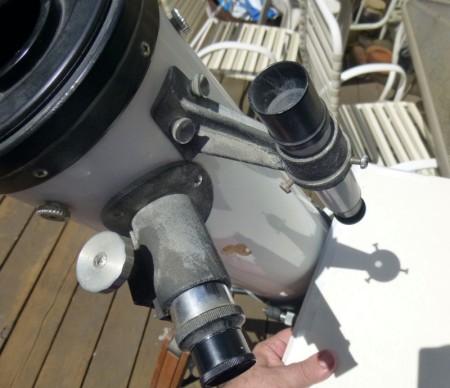
This is the only safe way to view the sun.
I first lined up the telescope by projecting an image of the sun through the small 4x spotting scope ...
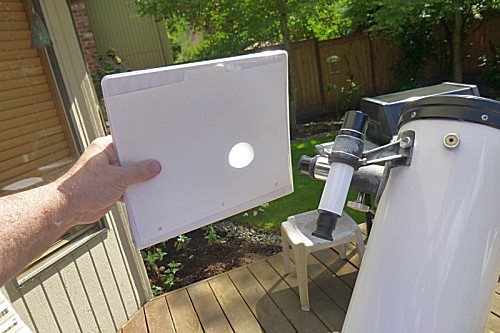
... and then located the image through the main telescope tube, projecting the reflected sunlight onto a white surface, which I photographed.
![]()
Transit of Mercury, 9 May 2016, taken from northwest Oregon USA.
Click on images for larger versions
The
morning was overcast, with only occasional
glimpses of the solar disk through heavy clouds.
But there it was: the
tiny dot of Mercury in
mid-transit, seen here in the lower right
quadrant not far from the disk center.
The
miniscule black dot
is indeed our smallest planet,
orbiting nearest the sun.
An
hour or so late, the tiny dot had moved
up and to the right.
Also visible in these images (best viewed
fuller-size by clicking on them) is a large
sunspot just to the upper left of the
center of the disk.
So how does the transit image of Mercury passing in front of the sun compare
with that of Venus?Here is a stack of two of my photos with the solar disk approximately the same,
showing the difference in apparent size of the two planets ... as viewed from
Earth, of course!
During
transit, the planets are at "opposition" to Earth,
meaning that they are at their closest approach (variations
in elliptical orbits aside). There is no other configuration
than opposition that would create the solar transits.
At opposition, Venus is approximately 38 million miles.
At opposition, Mercury is approximately 77
million miles
(remember that Mercury orbits further away from Earth
than does Venus).
So during solar transits, Mercury appears much
smaller
than Venus, not only because it is a physically smaller
planet (Venus' diameter is 7,521 miles; Mercury's is
3,032 miles, only 40% the size of Venus) ... but also
because Mercury is further away at opposition than is
Venus (just about twice as far) !
![]()
